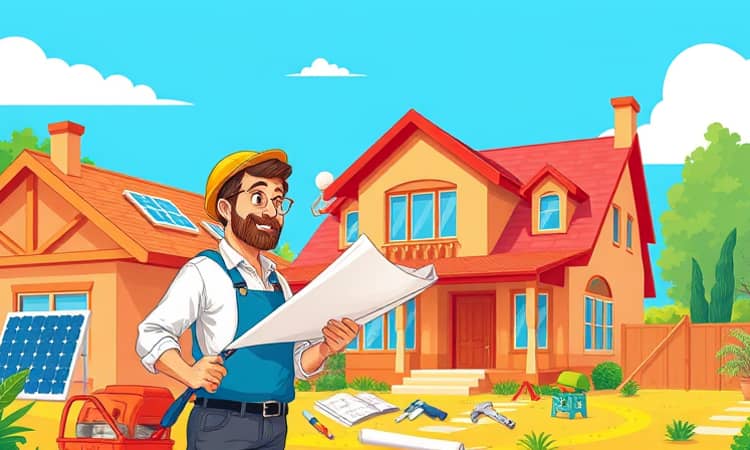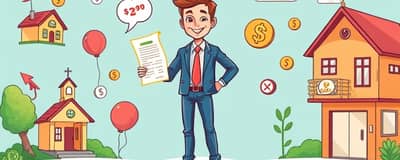The desire to transform living spaces has never been stronger. As property values rise and energy efficiency becomes a priority, homeowners are turning to personal loans to bridge the gap between ambition and budget.
Key Industry Trends and Market Size
By 2025, the home improvement loan market is set to reach $450 billion in total value, driven by homeowners eager to modernize and upgrade their properties. The sector is expanding at a robust 6.5% compound annual growth rate, reflecting healthy consumer confidence and economic stability. Simultaneously, value in the construction industry has climbed by 10%, as personal investments fuel demand for skilled trades and innovative materials.
Lenders are responding to consumer priorities, particularly the push towards sustainability and eco-friendly upgrades. From solar panel installations to high-efficiency HVAC systems, green-focused loan products are becoming commonplace, offering competitive rates and specialized incentives for environmentally conscious borrowers.
Popular Financing Methods and Personal Loan Usage
Homeowners have a spectrum of financing options to choose from:
- Personal loans (often unsecured)
- Home equity loans (HEL)
- Home equity lines of credit (HELOC)
- Credit cards (for smaller projects)
- Government-backed loans (energy efficiency)
Among these, personal loans stand out for their speed and flexibility in funding. With 6.6% of all personal loans allocated to home improvements, these products cater to borrowers who value a quick approval process and transparent terms. In Q1 2025, approximately 24.6 million Americans carried $253 billion in personal loan debt, averaging $11,631 per borrower.
Interest Rates, Terms, and Loan Amounts
Interest rates for personal loans used on renovations span from 6.49% to 35.99% APR, influenced by borrower creditworthiness and loan details. Borrowers with excellent credit (FICO scores above 720) may secure:
- 13.72% APR on 3-year loan terms
- 19.21% APR on 5-year loan terms
The overall average personal loan rate is 12.64% APR for those with a 700 FICO score. Loan amounts typically range from $1,000 up to $75,000, with repayment schedules spanning 36 to 84 months. For example, a $50,000 renovation loan at a 6.02% fixed rate (plus a $100 origination fee) yields a 6.15% APR, monthly payments of $1,522, and total interest of $4,776.
Approval Process, Disbursement, and Requirements
Most personal loan applications are processed swiftly, often resulting in funds disbursed within one business day. Approval hinges on several factors:
- Credit score and payment history
- Income stability and debt-to-income ratio
- Loan amount relative to borrower profile
- Intended use of funds
Lenders may charge origination fees or require documentation that substantiates income and financial health. Borrowers are advised to shop around for best available offers, comparing pre-qualification rates without impacting their credit score.
Factors Driving Demand for Home Improvement Loans
Several dynamics have intensified the need for financing solutions. First, high material and labor costs due to inflation have eroded personal savings, leaving many homeowners reliant on credit to cover escalating expenses. Second, energy-efficient upgrades—such as advanced insulation, solar installations, and smart thermostats—often require substantial upfront financial investment, making loans an attractive bridge to long-term cost savings. Finally, rising home equity values have made secured options like HELs and HELOCs appealing, but unsecured personal loans remain popular for those lacking sufficient collateral or seeking debt without collateral requirements.
Risks, Repayment, and Delinquency Insights
While personal loans present clear benefits, borrowers must weigh potential risks. As of Q1 2025, personal loan delinquency rates (60+ days past due) stand at 3.49%, down from 3.75% the previous year. This improvement suggests better credit management among borrowers, but vigilance is still crucial. Delayed payments may result in late fees, higher interest costs, and negative impacts on credit scores.
Personal loans account for just 1.4% of outstanding consumer debt, compared to higher shares for credit cards and mortgages. Nevertheless, prudent borrowers assess their capacity for timely repayment, ensuring that monthly obligations align with personal budgets.
Comparative Overview: Loan Types for Home Improvements (2025)
Maximizing Loan Value and Project ROI
To ensure your borrowing translates into lasting benefits, consider these strategic tips:
- Prioritize rooms with highest resale value, such as kitchens and bathrooms.
- Select energy-saving upgrades to reduce utility bills over time.
- Match loan size to project scope, avoiding unnecessary borrowing.
- Review all fees, penalties, and repayment schedules carefully.
By focusing on projects with proven return on investment, you enhance both home comfort and long-term equity growth.
Technological Innovations and Government Incentives
The lending landscape is evolving with AI-driven platforms that expedite underwriting and personalize loan offers. Digital applications, real-time status updates, and machine-learning algorithms help borrowers secure competitive rates tailored to their profiles.
Simultaneously, regional and national programs encourage energy-efficient renovations. In Europe, incentives in Germany and France reward homeowners who install green technologies. Domestic initiatives, including tax credits and state grants, further support sustainable home upgrades and reduce overall borrowing costs.
Conclusion: Smart Borrowing for Lasting Home Value
In today’s dynamic market, leveraging personal loans for home improvements offers a swift and flexible solution. By understanding market trends and loan features, borrowers can fund meaningful renovations while managing costs effectively. Thorough preparation—evaluating rates, terms, and project ROI—ensures that your home improvement loan becomes an investment in both lifestyle and long-term property value.
Embarking on a renovation journey armed with financial clarity and strategic planning sets the stage for success. Whether you aim to modernize living spaces, boost energy efficiency, or enhance resale potential, the right personal loan can transform your vision into reality.














